Text
Hi Maddy
Sorry for the late reply and thank you for replying to my post. Wow, the link you posted on Butterflyway Project looks really interesting. Although the green revolution has its failures, I think there are some noteworthy successes. Many of the innovations from the green revolution have its pros and cons, they are still been debated if they bring actual utility to our society. On the top of my head, I think the case of the golden rice can be an example to illustrate this contention.
Golden Rice is conventional rice that has been genetically engineered to have high levels of beta-carotene, the precursor to vitamin A. Beta-carotene is found in a variety of fruits and vegetables (it’s what makes carrots orange), but rice, which can make up to 80 per cent of the daily diet in Asia, contains few micronutrients. It is a form of GMO. There are basically two schools of thought for this strain of rice.
The biggest opponent for the golden rice would be Green Peace asserting that the cultivation of this rice would open doors to the widespread introduction of other GMOs. Unchecked GMOs would cause severe hidden health implications which can have disastrous outcomes.
However, the creation of the golden rice can solve dietary vitamin A deficiency which kills 670,000 children and causes 500,000 cases of irreversible cases of blindness in Asia each year. Hence it would be an excellent problem solver for this issue.
No matter the side of the agreement, I think the pressure to increase food supply is definitely increasing. Personally, I do hope that we can see more implementation of technology into agriculture to help deal with the cumulative demand.
Cheers,
Beacher
Technology Shaping Rural Landscapes
Hi everyone,
After attending Wednesday’s rural symposium, I was very inspired by the various speakers and their presentation on their field of studies. For me, I really find the presentation on digital agriculture by Abdul-Rahim was most impactful to me. His presentation was during one of the afternoon slots under the agriculture broad category titled “The social disruptiveness of Digital Agriculture Technologies: Asking Questions in the Context(s) that Matter”. Although for much of the presentation discussion was with regards to the social implications of emerging farming technologies and social reactions, I feel it has encouraged me to compose a continuation of my previous post.
With the recent developments in agriculture technologies and its high penetration rates in many countries around the world, I think it is inevitable that Canada’s agriculture landscape will be shaped as well in the coming years. I think it would be ignorant to think that in the increasingly globalising world today we can still fall back and resist technologies’ “invasion” on the agriculture industry. In fact, I would argue that change is already happening all around us. The way commodities and foodstuffs are produced more efficiently and transported at a faster pace to reach the consumer markets. For this post, I would like to further elaborate on some of the innovative methods in which technologies can drastically improve the efficiency of agriculture production workflow.
Vertical Farming
Although the concept of vertical farming is largely applicable to urban development and planning and not much so for rural, I think it is still relevant for farms fringing/located at edges of urban centres. If you are unsure what is vertical farming, I urge you to read this interesting article that briefly explains the advantages of this method. Vertical farming is a revolutionary approach to the production of agriculture products. Food yield from this type of farming method is better in terms of quantities and quality at lower labour cost, lower water usage and is not affected by the changing seasons. Especially in countries with growing population size coupled with limited space for growth, vertical farming is gaining popularity as “modern” farms can be integrated with urban structures. Personally, I really like this concept because, in the midst of urban development, the characteristics and productivity of the rural are not lost (although it is not the same can not be said for cultural changes but that would be another blog post, maybe). I find comfort knowing that harmony can be achieved between the two entities.

Source
Drones and Bees
At this point in time, I think it is no secret that the effects of climate change are taking a toll on the bee population. As the Time magazine stated, more than 700 species of North American Bees are headed toward extinction. The disappearance of the bee population could be detrimental for the agriculture industry as the bees played an important role as pollinators that help sustain crop production. With improvements in drone technologies, drones are not being experimented to supplement the pollination. While writing this post, I cannot help but think of how this phenomenon is similar to the Netflix series – Black Mirror (ep. Name: “Hated in the Nation”).

Source
If you want to find out more about how drones can help with pollination, I suggest you can check the video below which I find applicable to this section.
youtube
Of course, there are more innovative ways that are already changing the agriculture of the rural environment and what was discussed is merely two points. Besides the aforementioned two points, there are also: Artificial intelligence, Internet of Things and Automation. These buzzwords are also some of the hot topics in our world today that are slowly changing lands and our way of life.
Cheers,
BC
8 notes
·
View notes
Text
Hi Taylor,
First of all, great graphic! I really like the style of the image. Also, I fervently agree with you on the notion that rural communities that is proximate to more developed cities will see radical transformation due to the influence of the urban. Trends for population change would might follow suit. I think what is interesting is the change in population composition. The locals fled their original local while people from the outside flood in to seize the economic gain of the rural town. Tourism and development in other industry can be attributed to this change.
I also believe that in 50 years’ time, the rural would still remain as the fuel of the country and driving development in urban areas. Hence, I agree with you that the rural is the backbone of the economic as well as its where all the productivity happens. It would then be unwise to invest in the cities while neglecting the rural. Profits and revenues need to be reinvested into the rural to secure the future for Canada. This can be done, like you said, placed-based development focusing on youth, transportation, economy and communication infrastructure (may I add).
It is heartening to see initiatives for the development of the rural set in motion. Although there are many speculations for the decline of the rural, but I am sure that with the strong political will and leadership by the Canadian government, the future is still optimistic for the rural community.
Cheers,
Beacher
Not all that Glitters is Gold
The meaning of rural:
Looking back on my very first post about my initial thoughts of rural Canada, I had a very personal and narrow perspective. I mostly thought about the geography of rural Canada and the physical features that separated the provinces from each other. Don’t get me wrong; diversity and Canadian nature are very important aspects of rural space, but after exploring more dimensions over this course, I have come to realize the real complexity behind this term. I really feel like the meaning of rural is different for everyone, as it is the remote spaces that people give recognition to in accordance with their experiences. For example, we all think to analyze the countryside of Ontario, but I bet the discussion would be very different if this class were being held in northern Canada, or on the west coast… or say, Africa! This was especially brought to my attention during Abdul’s presentation in class and in one of the exhibitions at the art gallery which told the story of third-world fishermen risking their lives, and usually becoming drug users.
Rural Canada is also a beautiful space, but it is also where a lot of destruction and conflict arises involving the extraction of natural resources. I think that we could relate rural to the saying, “not all that glitters is gold”, in that although everything may appear beautiful and simple, there is a certain evil that is behind that aesthetic curtain. I think that there is a lot of work left to be done in making sure we don’t destroy the purity of rural Canada, while still encouraging community development.
How do I envision rural Ontario in 10-100 years?
I think that populations in smaller townships will start to grow. An article from Calgary states that as residents grow older, and younger people move out of these towns, rural communities across Canada are looking to encourage immigration as a way to rejuvenate their workforce and expand their tax base. Therefore I think it is likely that rural areas may become more culturally diverse over time, which would be interesting. I suppose an example of this is the increase of Mexican immigrants working in tomato greenhouses in Leamington, Ontario, which I have seen first hand. The challenge is attracting them and convincing them to stay in the country rather than in the more opportunistic cities, but some provinces have started to improve on this by collaborating small towns with provincial and federal governments. Initiatives such as customized immigration plans (towns in N.B), social media campaigns (in B.C.), Temporary Foreign Worker Programs, and simply making rural communities more welcoming has drawn the interest of workers from Germany, Russia, and the Philippines.
I don’t think there will be much change of Rural Ontario in the next 10 years, but within the next 50 years, I would predict that we would start to notice these population shifts. Although it is expected to be very slow, even migration of Canadian citizens out of urban centers may be likely as cities become overcrowded and overpriced without expanding in time. In the next 50-100 years, I would imagine a St.Jacobs-like transformation to occur in many rural communities that are nearby a larger ‘city’ center. As discussed in class, we had all agreed that St.Jacobs was on the edge of being classified as a rural town. Towns in Ontario may be likely to see similar transformations if marketing strategies for tourism and businesses enhance.

With 2030 global water shortage and 2050 food shortage threatens us, author Robert Giles believes in a rural future, and has made a case study in West Virginia. The design is pitched as the dynamic, systems-solution to long-term global problems. It is made up of over 150 small businesses, guided by GIS and prescriptive software based on the latest science, working together to manage rural lands profitably and to meet rising food and water needs. Although ideas like this may be far fetched, I think the concept is admirable, showing the real opportunities of rural land. Lastly, I could also envision rural Ontario becoming a very green functioning society in the very distant future (~100 years). Already many urban and rural centers around Ontario have begun to prioritize green infrastructure and technology by using nature for community economic development and resilience. I would only imagine this to increase as Canada continues to realize the importance of our environment and protecting rural resources.
How do we get people to care about rural Ontario?
I think it’s important to remind people of the relationships in rural communities, opportunities and the productivity they offer. Rural Ontario is home to many resource industries and agriculture, with about 17% of Canadians living in these areas. Looking back at the presentations during the rural symposium, it is clear that agri-policies are not enough to address rural communities, and that issues are more specific. I think that the best approach is applying place-based development for the future of Ontario, focusing on youth, transportation, and economy.
On January 17, 2019 the director, Brent Royce, of Ontario Federation of Agriculture (OFA) released a statement discussing the need for investment in Ontario agriculture and rural communities. The video below is a 2-minute audio of OFA’s advice to the government.
youtube
https://www.youtube.com/watch?time_continue=167&v=uQS5q6sOKjc
Royce declares that investing in rural Ontario will create economic opportunity for everyone. Specifically, investing in natural gas, infrastructure, transportation, health care, and rural schools. Royce says that Ontario’s economy has the most to gain from prioritizing neglected regions in the province, and that it it will jump start farms, agri-business and rural communities, all while stimulating all of Ontario in the end. The OFA understands the province’s current fiscal situation and the need for restraint, but they also know that sound public investment in Ontario agriculture and rural communities will pay dividends and will ultimately improve Ontario’s fiscal outlook by driving the economy forward.
Ultimately…
The future of rural Canada will likely look very different among provinces, as there are many different conceptions of ‘rural’, and there is no one universal model for rural innovation. One thing is for sure, we need more connectivity and more meaningful development within rural Ontario. Rural policy needs to be prioritized and be considered at the very start of policymaking in Ontario, Canada, and worldwide. Does anyone else have different thoughts on how we can best approach the sustainability of rural Ontario?
-P.s. thank you all for the great discussions over the semester! Good luck to everyone in your future adventures! :)
References
https://calgaryherald.com/news/national/canadas-small-cities-and-rural-areas-desperate-for-immigrants
https://www.cicnews.com/2016/10/rural-areas-and-small-cities-across-canada-eager-to-attract-more-newcomers-108558.html#gs.49deoq
http://www.ruralsystem.com/rural-future/
3 notes
·
View notes
Text
Hello,
Thanks for replying to my post. Hope you had a great time in Peru. I know this is kind of leaning towards the topic of urban development and planning, but I can’t but relate what you wrote about urban green infrastructure with the concept of a garden city by Howard Ebenezer. I think you would find the information below helpful.
The garden city movement is a method of urban planning that was initiated in 1898 by Sir Ebenezer Howard in the United Kingdom. Garden cities were intended to be planned, self-contained communities surrounded by "greenbelts", containing proportionate areas of residences, industry and agriculture.
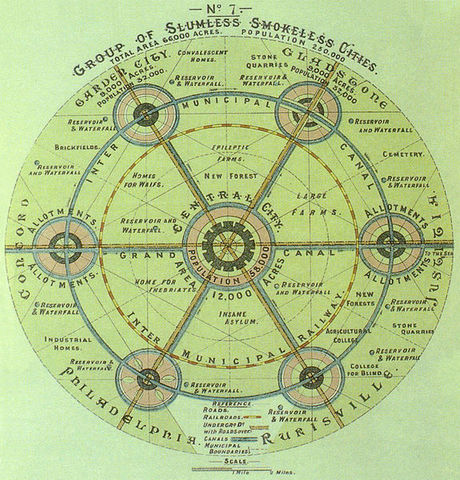
Source
Edward Bellamy's novel Looking Backward and Henry George's work Progress and Poverty inspired Ebenezer Howard to publish his book To-morrow: A Peaceful Path to Real Reform in 1898 (reissued in 1902 as Garden Cities of To-morrow).
Ideally, his garden city would accommodate 32,000 people on a site of 6,000 acres (2,400 ha), planned on a concentric pattern with open spaces, public parks and six radial boulevards, 120 ft (37 m) wide, extending from the centre. The garden city would be self-sufficient and when it reached a full population, another garden city would be developed nearby. Howard envisaged a cluster of several garden cities as satellites of a central city of 50,000 people, linked by road and rail.
In fact, if I am not mistaken, urban planners of my country referenced heavily on his concept to plan and develop my city in the 1960s. Thanks to the foresight of the political pioneers, residents in Singapore today get to enjoy a great lash of green. I think what is so good about this form of planning is that it is really sustainable. Buildings and roads are valued added and are given multiple functions which I personally think is really awesome. Infrastructures can now both help with purifying air and cooling while serving its original purposes. I definitely agree with your wish of biophilic design becoming the architectural standard for cities around the world. The world can definitely do with a bit more green.
Cheers,
Beacher
Technology Shaping Rural Landscapes
Hi everyone,
After attending Wednesday’s rural symposium, I was very inspired by the various speakers and their presentation on their field of studies. For me, I really find the presentation on digital agriculture by Abdul-Rahim was most impactful to me. His presentation was during one of the afternoon slots under the agriculture broad category titled “The social disruptiveness of Digital Agriculture Technologies: Asking Questions in the Context(s) that Matter”. Although for much of the presentation discussion was with regards to the social implications of emerging farming technologies and social reactions, I feel it has encouraged me to compose a continuation of my previous post.
With the recent developments in agriculture technologies and its high penetration rates in many countries around the world, I think it is inevitable that Canada’s agriculture landscape will be shaped as well in the coming years. I think it would be ignorant to think that in the increasingly globalising world today we can still fall back and resist technologies’ “invasion” on the agriculture industry. In fact, I would argue that change is already happening all around us. The way commodities and foodstuffs are produced more efficiently and transported at a faster pace to reach the consumer markets. For this post, I would like to further elaborate on some of the innovative methods in which technologies can drastically improve the efficiency of agriculture production workflow.
Vertical Farming
Although the concept of vertical farming is largely applicable to urban development and planning and not much so for rural, I think it is still relevant for farms fringing/located at edges of urban centres. If you are unsure what is vertical farming, I urge you to read this interesting article that briefly explains the advantages of this method. Vertical farming is a revolutionary approach to the production of agriculture products. Food yield from this type of farming method is better in terms of quantities and quality at lower labour cost, lower water usage and is not affected by the changing seasons. Especially in countries with growing population size coupled with limited space for growth, vertical farming is gaining popularity as “modern” farms can be integrated with urban structures. Personally, I really like this concept because, in the midst of urban development, the characteristics and productivity of the rural are not lost (although it is not the same can not be said for cultural changes but that would be another blog post, maybe). I find comfort knowing that harmony can be achieved between the two entities.

Source
Drones and Bees
At this point in time, I think it is no secret that the effects of climate change are taking a toll on the bee population. As the Time magazine stated, more than 700 species of North American Bees are headed toward extinction. The disappearance of the bee population could be detrimental for the agriculture industry as the bees played an important role as pollinators that help sustain crop production. With improvements in drone technologies, drones are not being experimented to supplement the pollination. While writing this post, I cannot help but think of how this phenomenon is similar to the Netflix series – Black Mirror (ep. Name: “Hated in the Nation”).

Source
If you want to find out more about how drones can help with pollination, I suggest you can check the video below which I find applicable to this section.
youtube
Of course, there are more innovative ways that are already changing the agriculture of the rural environment and what was discussed is merely two points. Besides the aforementioned two points, there are also: Artificial intelligence, Internet of Things and Automation. These buzzwords are also some of the hot topics in our world today that are slowly changing lands and our way of life.
Cheers,
BC
8 notes
·
View notes
Text
Last Post: To the Infinity and Beyond.
Hi all
I guess this would be my last post. Firstly, some reflections of this course, I am really thankful for the field trip to the two rural locations (okay maybe St Jacobs isn’t that rural). I learnt a lot from the weekly seminar sessions and sharing by my fellow peers. It is a pity because I feel like I did not participate much in the discussion mainly because I am still rather fearful of saying incorrect things during class. It was really an eye-opener to be exposed to a seminar styled class which I have never experienced before. I hope in the future I would be more active in class and actively participate in the in-class discussions.
Alright back to the topic at hand: the future of rural places. I think I mentioned in another previous post about the future of rural places. I am glad that the topic given reinforced the importance of future thinking for the rural place because they are the fuel for the urban. For this post, I would discuss some of the trend and issues of future rural places. I will end off by introducing the idea of smart villages which I think would be what I imagine most future rural places will transform into.
Demographics
I feel that future demographics of the rural is a pressing issue for policy-makers that it would continue to be a significant issue for the future. With regards to my version of rural Ontario for the population size, to be honest, I am uncertain. This is due to the high variability of the balance between rural and urban population growth. Currently, we are seeing the ‘life-cycle effect’ within rural Canada. It describes the movement of people between the urban and the rural, younger population would move the cities in pursuit of better opportunities whilst the aged would migrate to rural areas. Future of rural demographics is highly dependent on the continuation of this cycle. If the life cycle effect proceeds as with current trends, the rural would age more rapidly than the cities. This could have several implications on the rural communities, one salient implication would be the availability and accessibility of public service for these communities. Hence, I think it is also certain to say that the future liveability of the urban would have implications on the cycle, ultimately determining if the cycle will continue.
For those that are left behind, the impacts are massive. As the population slowly diminishes, all sources of incoming for social spending as well as the continuation of cultural activities will gradually dwindle. With each decrease in spending, closure of stores and cancellation of events, each step further erodes the quality of life of the rural. As mentioned, the local government would face more difficulties in the provision or maintaining the quality of various social services. Cost of these services is also expected to increase if the trend continues. The Canadian Council on Learning reported in 2006 that students in rural Canada significantly underperform their urban peers. Secondary school dropout rates are nearly twice that of metro regions and the percentage of 25- to 54-year-olds with at least some post-secondary education is 10% below that of urban areas.
Of course, there are some abnormalities for some of the rural areas. Those communities that are proximate to urban centres suffer fewer consequences of demographic issues. Those with scenery, cultural or recreational attractions can balance local enterprise with income from tourism. Proximity also draws out the issue of connectivity which would be discussed in the next section.
Connectivity
Although connectivity between the rural and the urban has been mentioned multiple times throughout this term, I feel that it is important to reintroduce it to illustrate its importance for the future of the rural. Improving both physical (transport networks) and virtual connectivity is paramount to support rural economics as well as the provision of public services. This connectivity is especially important for more isolated rural areas as they are in dire need of services and resources to sustain themselves. In order to ensure a sustainable future for rural Canada, the topic on connectivity is therefore significant. In terms of physical connectivity, in the future, I think there would be an improvement in physical infrastructure to improve connectivity. This is especially important rural communities that are dependent on a market-based delivery method for their economy. The lack of transport networks creates natural barriers for rural business to break into the increasingly concentrated markets in the urban. Therefore, I feel it is important to fill in these gaps in the transport networks. One suggestion I feel that would greatly improve transport would be inter-provincial and federal level collaboration to plan for high-speed rail throughout Canada. This idea is mainly based on the success in the development of similar high-speed rails in other developed countries like Japan, China and other European countries.
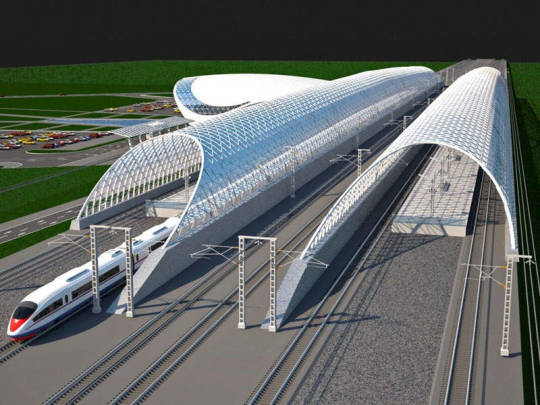
Source
With regards to virtual connectivity, I think broadband communication (3G and 4G) is going to be an issue of growing importance. This is so because, in the digital age that we live in today, the absence of such connectivity would lead to unwanted problems like digital exclusion. The rural is deprived of crucial information which can further worsen existing problems in the rural. With the improvement of digital connectivity, I argue that it can bridge the gap between the rural and the urban. As such digital connectivity should be addressed in rural communities in the future. However, looking at current trends for internet penetration, I am optimistic that future rural place would not lack digital connectivity. With better virtual and physical infrastructure, I think rural places are slowly transitioning into what should be known as “Smart villages”.

Source
Smart Villages
Rural communities are slowly closing the gap with the metro by applying their “smart city” concept to smaller rural places. Although one difference between smart cities and smart villages would be the forms of implementation. Smart cities used interrelated digital technologies to transform the different functions of cities with top-down implementation.
On the other side, smart villages are created through the focus on local communities taking their futures into their own hands, often, but not exclusively, with the help of digital technologies.
Although there is still contention for the meaning of While the idea of smart villages may mean different things to different people, several key features of smart villages have, in fact, been articulated and clarified through the European Commission’s EU Action for Smart Villages (April 2017).
“In Smart Villages traditional and new networks and services are enhanced by means of digital, telecommunication technologies, innovations and the better use of knowledge, for the benefit of inhabitants and businesses. Digital technologies and innovations may support quality of life, a higher standard of living, public services for citizens, better use of resources, less impact on the environment, and new opportunities for rural value chains in terms of products and improved processes. The concept of Smart Villages does not propose a one-size-fits-all solution. It is territorially sensitive, based on the needs and potentials of the respective territory and strategy-led, supported by new or existing territorial strategies.”

Source
Personally, I think smart villages will be the general morphology of future rural place. I am a strong supporter of information and communication technologies development. I concur with the statement mentioned in the same article by European commission which states that “Technology is important as are investments in infrastructure, business development, human capital, capacity and community building. Good governance and citizens involvement are also key.”
4 notes
·
View notes
Text
Butler’s Critics
Hi guys,
Great job on the presentations during the field trip. I definitely gained a lot of insights into rural geography from your sharing/presentations. As I mentioned Butler’s tourism area life cycle (TALC) briefly during my presentation, it is a popular concept that explains the evolution of tourist sites. However, I feel that my presentation wasn’t that informative and critical enough for the depth of the discussion. For this post, I would like to further elaborate some critics of TALC and how these missing gaps in the theory are crucial for the management of rural tourism.
Although the TALC reflects the nature and evolution of tourism development of an area, it lacks empirical details which is problematic for effective tourism management strategies of rural communities. This can be explained in two specific regions of the model. One such problems would be the potential predictability of the model. By the stands of modern academic journals, the model would be of limited validity as the majority of the paper is not based on empirical research of any depth. The level of theoretical development of tourism research should be on par with practical contributions. One example of this issue is effectively measuring the growth rates of the tourism sector in rural areas. As not all rural tourist areas are identical, variations in growth rate have drastic differences in implications of the industry to the local community. Without empirical measurements, tourist management policies cannot be properly implemented to ensure sustainable growth. Growth cannot be predicted, sudden changes in tourist volumes can severely impact the ecological and cultural health of the rural community which they might not recover from. Hence it would be ideal to give general guidelines or keyframes of the rates of tourist growth rates within the TALC so that policymakers are more informed. Although it may seem unnecessary to make this point considering the fact that TALC was revealed in the 1980s and it is not fair to place this model in comparison with contemporary research, I think my main point is that we should be critical of the concepts of the past.
Next, to a certain extent, TALC might be misleading in a sense that the term evolution of tourism development used in the concept describes the “biological” change akin to Darwinism evaluation. I think evolution implies that tourism areas would naturally follow the stages of development mentioned in the paper. However, I think it should be clear that tourist areas cannot be development or decline without relevant interventions. Such intervention would not come about from natural processes as in biological evolution, but rather through the deliberate actions of those with an interest in the wellbeing and continued attraction of the destination. A focus on the “Cycle of Evolution” and the figure in the original article appears to have distracted attention from the argument about the need for intervention. This is rather significant for rural places because intervention is needed for the continued survival of the tourism sector. Unlike traditional tourist destinations, rural places are extremely fragile and vulnerable to external forces. Delicate measures need to be enacted to safeguard the rural community. In light of the many problems of traditional mass tourism, the municipal governments or the relevant authorities play a key role to ensure the viability and sustainability of tourism development in rural places.
This post is supposed to supplement my presentations on rural tourism. I hope it is beneficial and informative.
PS. Apologies for the lack of images for this week’s post, had to rush it since it is already late!
1 note
·
View note
Text
Technology Shaping Rural Landscapes
Hi everyone,
After attending Wednesday’s rural symposium, I was very inspired by the various speakers and their presentation on their field of studies. For me, I really find the presentation on digital agriculture by Abdul-Rahim was most impactful to me. His presentation was during one of the afternoon slots under the agriculture broad category titled “The social disruptiveness of Digital Agriculture Technologies: Asking Questions in the Context(s) that Matter”. Although for much of the presentation discussion was with regards to the social implications of emerging farming technologies and social reactions, I feel it has encouraged me to compose a continuation of my previous post.
With the recent developments in agriculture technologies and its high penetration rates in many countries around the world, I think it is inevitable that Canada’s agriculture landscape will be shaped as well in the coming years. I think it would be ignorant to think that in the increasingly globalising world today we can still fall back and resist technologies’ “invasion” on the agriculture industry. In fact, I would argue that change is already happening all around us. The way commodities and foodstuffs are produced more efficiently and transported at a faster pace to reach the consumer markets. For this post, I would like to further elaborate on some of the innovative methods in which technologies can drastically improve the efficiency of agriculture production workflow.
Vertical Farming
Although the concept of vertical farming is largely applicable to urban development and planning and not much so for rural, I think it is still relevant for farms fringing/located at edges of urban centres. If you are unsure what is vertical farming, I urge you to read this interesting article that briefly explains the advantages of this method. Vertical farming is a revolutionary approach to the production of agriculture products. Food yield from this type of farming method is better in terms of quantities and quality at lower labour cost, lower water usage and is not affected by the changing seasons. Especially in countries with growing population size coupled with limited space for growth, vertical farming is gaining popularity as “modern” farms can be integrated with urban structures. Personally, I really like this concept because, in the midst of urban development, the characteristics and productivity of the rural are not lost (although it is not the same can not be said for cultural changes but that would be another blog post, maybe). I find comfort knowing that harmony can be achieved between the two entities.

Source
Drones and Bees
At this point in time, I think it is no secret that the effects of climate change are taking a toll on the bee population. As the Time magazine stated, more than 700 species of North American Bees are headed toward extinction. The disappearance of the bee population could be detrimental for the agriculture industry as the bees played an important role as pollinators that help sustain crop production. With improvements in drone technologies, drones are not being experimented to supplement the pollination. While writing this post, I cannot help but think of how this phenomenon is similar to the Netflix series – Black Mirror (ep. Name: “Hated in the Nation”).

Source
If you want to find out more about how drones can help with pollination, I suggest you can check the video below which I find applicable to this section.
youtube
Of course, there are more innovative ways that are already changing the agriculture of the rural environment and what was discussed is merely two points. Besides the aforementioned two points, there are also: Artificial intelligence, Internet of Things and Automation. These buzzwords are also some of the hot topics in our world today that are slowly changing lands and our way of life.
Cheers,
BC
8 notes
·
View notes
Text
Future of Rural Places
Hello,
Since the discussion of problems in rural Canada, one question has been bothering me: What will rural areas look like 20 years or 50 years down the road? Although it is highly unlikely that Canada will face land limitation issues due to its vastness, however, the rural is not completely rid of problems. While browsing for some resources to give me insight about the future of rural places, I came across this article which is highly suitable for this discussion post. What is so insightful about this journal article is that it not only shows the drivers/ factors for rural transformations, it also tells us about the seven derivatives of these drivers. This post will focus mainly on a few of the different transformation outcomes mentioned in the paper that can be applied to rural Canada’s context.
Rural stations
High-tech and large agriculture industries with a limited number of employees stationed within the rural stations. Much of the farming is automated with little human interference. One characteristic of these agro-industrial complexes would be that although they are spatially isolated from urban areas, they are “hyper-connected” to consumer markets through various transportation networks and ICT. One of the key drivers of this transformation is due to the highly penetrative globalization trends of food trade leading to the “concentration and vertical integration of food chains coupled with autonomous production of foodstuffs.
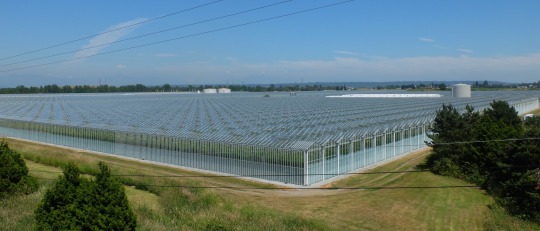
Source
Rural niches
For rural niches, the local people would gain means of income by leveraging comparative advantage/s through the creation of communal niches. Rural niches appeal to consumers’ demand which then draws in private and public investments directing at certain market sectors producing high quality, high added-value products or services. Some of the key drivers are consumers’ preferences for specialized high-value products as well as the desire to pursue new experiences. One example of this in rural Canada would be the repackaging of the rural for marketing tourism.
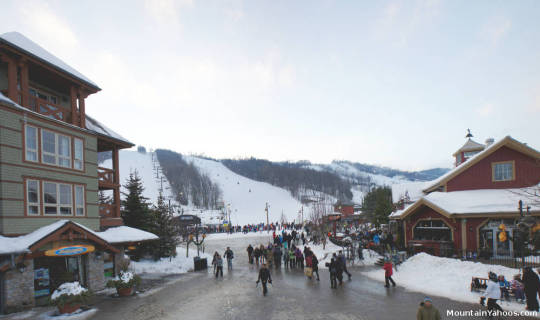
Source
Rural ghettos
Abandoned rural areas with a population that relies on self-subsistence for survival. One of the least desirable outcomes of rural transformation. Economic development is not presented or stagnated within the area. Population decline is also one of the preambles for the formation of rural ghettos. Key drivers include the lack of political will to revitalize the place and diverting public and private investments to elsewhere or into the cities.
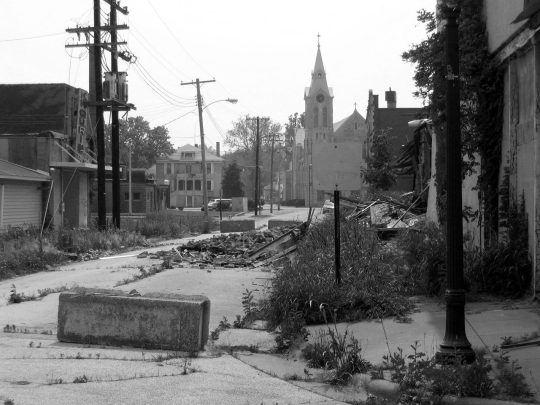
Source
Rural continuums
Rural-Urban Continuum is a concept of settlement geography that suggests the changes of urban structure towards its highly contentious boundaries. It challenges the current insights of what is rural and what is urban. Within rural continuums, food production is not the sole activity, there are also many non-farm activities. These activities would take place in smaller diversified enterprises that are highly linked to local markets and the neighbouring cities. Quality of living will be similar to urban areas. Therefore, rural continuums can be described as small multi-functional systems of activity linked to local markets. One salient difference from the aforementioned rural stations is the spatial locality of the two places, rural stations tend to be remote while rural continuum as the name suggests is proximate to the urban.
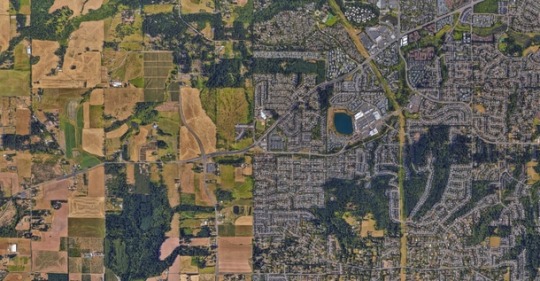
Source
Besides the four mentioned rural derivatives from drivers of transformations, there are three more which are peri- and urban farming, farming cities, and rural poles.
The various derivatives focus on two board trends which are the abandonment of rural areas and the revitalization of rural areas (See figure).
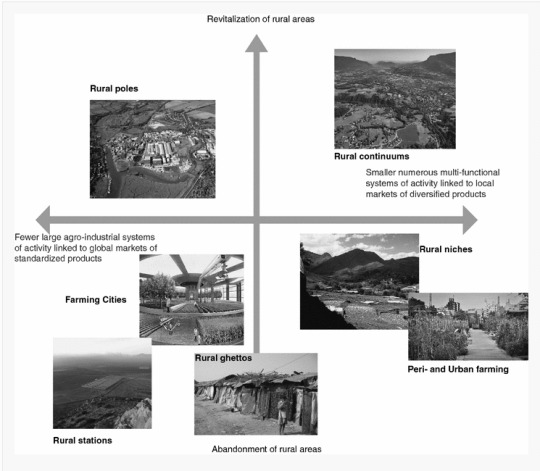
Seven plausible rural transformation (Bourgeois, 2017).
Personally, I feel that in the near future, rural places that are not within the development plans will diminish while those with potential growth will be revitalised and be integrated into urban structures. With the revolutionary introduction of automation, I think in the future most of the primary production of food would be robotised. Traditional farms which are not on the same levels as these uprising farms in terms of scale would be outmatched. Due to various uncertainties of the future, what are some of your point of view for future rural places?
0 notes
Text
Hello
Great post! I definitely agree with you on the notion that traditional mass tourism should be avoided due to its unsustainability. Mass tourism is characterized by an extreme concentration of tourists in one place which exceeds way beyond it’s carrying capacity. The large volume of visitors would result in an equivalent amount of tourism dollars into the host country or region which in turn act as a stimulus for economic development. However, without enough valuation of the environment, I think it is possible that most mass tourism models in the world today is degrading the surrounding lands. Any kind of tourism development inevitably contains some form of intrusion and erosion of the physical environment. Due to the nature of mass tourism, overdevelopment to accommodate the massive influx of tourism would require even more compromises on nature. Damages occur to both human and physical environment. For example, the destruction of the ecosystem as well as the displacement of the indigenous people. That is only the initial sunk cost of tourism development. Sustaining the mass tourism industry would further lead to the continuous depletion of natural resources. Besides the ecological dilemmas, there is a long list of other problems that are attached to the mass tourism model that I shall not elaborate on. Hence, I think your decision to go on this internship programme is really meaningful for the local people. Good on you!
Allow me to further elaborate on the benefits of rural tourism and hopefully, you can see some of these in your travels.
Firstly, as mentioned in your post, the contribution fees really help the locals as it generates income and employment opportunities (for more info on opportunities, you can take a look at my post). Rural tourism, especially in developing countries, is beneficial to women which are provided with new opportunities to earn income for their home. Secondly, another benefit would be that it promotes the conservation and effective management of natural resources of the area. Beside the conservation of the environment, smaller tourism models also provide motivations for the preservation of culture, which in your case the local architecture (mud huts) and traditional practices are preserved. Personally, I think it is very cool.
I hope you will have a great time in Peru!
Safe travels,
B.C.
Peru? Alpaca my bags!
During my week away from class I spent much time preparing for my upcoming trip abroad. On March 8th, I will be travelling to Peru as a sustainable agriculture intern with the company Operation Groundswell. I feel that this relates to the course theme of rural geography because I will be staying in the city of Cuzco, living and working on an organic eucalyptus farm, stationed at over 11 000 feet above sea level.
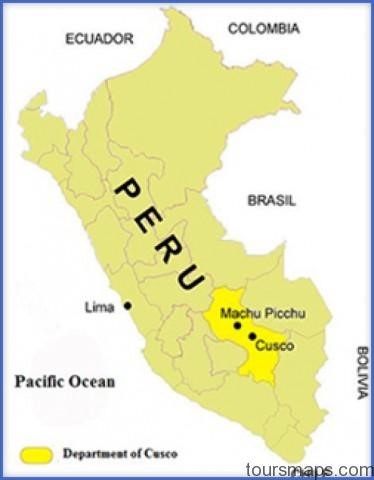
This region in Peru is known as the Sacred Valley because of its natural beauty. However, gold mining has continued to threaten the landscape. Peru is the largest producer of gold within the Latin American states. The toxins associated with modern mining processes pollute the air, water, soil and affect biodiversity. During my stay, I will be meeting with partners at Derechos Humanos Sin Fronteras, a local NGO to discuss the impacts of international mining companies on the environment and human rights. Whilst on the farm, we will learn about traditional agricultural methods used by the Incas. Accommodations include sleeping in environmentally sustainable adobe mud huts, common farm infrastructure found within the region.
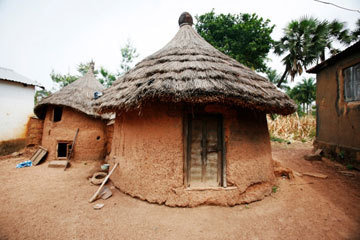
The program includes a $100USD contribution fee to economically benefit local communities and ensure that we leave a positive impact as ecotourists. I am excited for this new cultural experience, I am already learning things about Peru that I hadn’t known before, such as:
- The local language is not Spanish, but Quechua – traditionally spoken throughout the Incan Empire, currently the most widely spoken native language in the Americas
- The national culinary dish is cuy or roasted guinea pig, served with the head and feet intact
- Peru accounts for 87% of the world’s population of alpacas
- The Amazon River begins in Peru at Montaro River, near Machu Picchu

I believe this internship will be a great way to round off my University of Guelph career. I have traveled before but never to South America, so I am anxious to see what this new adventure brings. The concept of ethical travel will be emphasized and our footprints as tourists will be examined with discussions centered around how to maximize benefits to host communities. Being a socially-conscious traveler includes things such as consuming locally-sourced products, supporting fair trade initiatives and booking through small family-owned tour operators. By doing your research, you can avoid succumbing to the mass tourism model in which offers affordable vacation packages at the expense of the natural environment.
Huq p'unchaykama,
Paige
2 notes
·
View notes
Text
Opportunities and Connectivity
Hi everyone,
I hope everyone had a good reading week. I sure had a great time travelling during this period unlike my past semesters back at home. When I was in NUS during a normal school term, reading week’s sole purpose was to catch up on my readings and revise for midterms. However, since its an exchange semester, I decided to book a trip to Yellowknife in the province of Northwest Territories for a short getaway. The main reason I travelled to the Canadian capital of northern lights because it has a lifelong dream for me to witness it in person. Besides the freezing temperatures (seriously, no amount of clothing is enough to defend against the cold), Yellowknife is really gorgeous. I also really love the place for its Inuit culture. It was a great experience overall, but during one of the conversations with my tour guide, Robert, really made me ponder about the discussion in class about the theme of connectivity and opportunities in rural areas.

This photo cost me the inability to use my fingers for 10 minutes. Location: Prosperous Lake.
Connectivity
Why did I bring up these two topics? Firstly, for connectivity, based on my exchanges with the local people in Yellowknife, I see recurring implications for the lack of connections. Although Yellowknife is NOT considered rural, personally I think that the connectivity can definitely be improved thus this discussion about connectivity in rural areas. Before the completion of the Deh Cho Bridge in 2012 that links Yellowknife with the rest of Canada, there is largely no road connections. This is because road construction in Yellowknife is difficult due to the presence of permafrost which degrades the roads via freeze-thaw action.
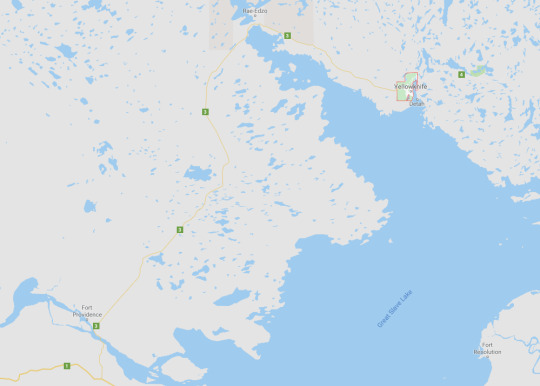
The relatively new connection of Yellowknife to the rest of Canada. Deh Cho Bridge is near Fort Providence Source
For example, as compared to the Walmart in Guelph which as a fresh food section, Walmart in Yellowknife only consists of packed and canned food goods. It is not surprising considering the fact that transportation costs would hinder the incentive for Walmart to bring in a wider selection of fresh food into their stores in Yellowknife. The aforementioned reason coupled with the fact that local food sources would pose a fiercer competition for Walmart in the provision of fresh food. Similar to Yellowknife, many rural regions in Canada has natural geographical barriers which hinder connectivity to urban Canada. The insufficient connectivity really poses problems for the development of the rural as it impedes the flow of resources, capital and human traffic into the area.
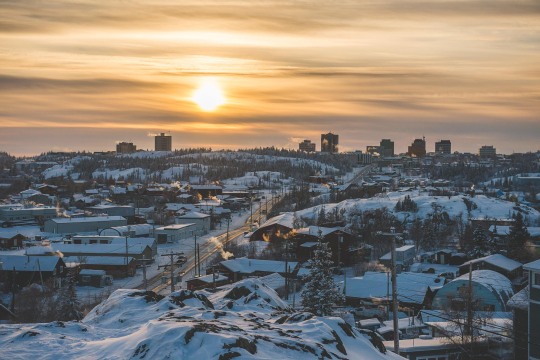
Sunset in Yellowknife Source
Opportunities
Opportunities are closely linked and coexist with connectivity. I think that opportunities are lacking in rural areas just like connectivity. Opportunities can be interpreted as the availability of services and access to such commodities. Compared to urban areas, the rural does have opportunities like the urban. One example is internet access as well as employment opportunities. People are also drawn to the urban for other needs such as education. In order for the continuous growth and development of rural areas, needs must be met. As argued by Abraham Maslow’s hierarchy of needs, the basic needs of a human are safety needs and physiological needs. Within these two broad categories includes the need for safety, shelter and stability (safety) and the need for air, water, rest and health (physiological). Most of the time, the provision of these (public) goods and services is the responsibilities of the government. If the political will of the authorities for development is unevenly distributed, uneven outcomes are inevitable. To me, the level of opportunities determines a lot of things like development in different areas and development thus results in different levels of connections.

Maslow's Hierarchy of Needs. Source
I just want to end off with a question. What would be the most important area of focus to speed up development in rural regions?
Also, if you happen to still be reading, I would like to know what you guys do during reading week.
Cheers,
B.C.

(Proudly NOT sponsored by Coca Cola)
1 note
·
View note
Text
Hello Vanessa,
Thank you for the insightful response. I definitely agree with what you pointed out with regards to the importance of people in the development process. When we dig deeper into the causal relationships between stakeholders, I think it is possible to find out the inherent causes for determining the effectiveness of a developmental project in the rural community. A developmental project with the relationship of the authorities and the locals being belligerent will be destined to crumble. Although in many cases, the objectives differ between stakeholders, what determines the success of any project depends on the compromises made by each group of stakeholders. Of course, the ideal scenario would be that each representative in the group can reach a unanimous agreement for the project itself, but it would be rare in the real world.
You mentioned the significance of the local people’s honest opinions on the development process of the rural transportation network. While I agree with you that their roles are important as they would want what is best for the rural community in that area, I tend to lean towards the idea that municipal and the provincial government bodies are more critical in the project. The local communities are the embodiment of the land, in other words, that they have the experience and the knowledge to advise on how the transportation network should be established. However, when considering the development of the transportation network to create a linkage from the rural to the urban, I think that the statutory committees involved in this project can really accelerate growth for both regions. The technical expertise in engineering and advanced technologies of the urban ensures the optimum decision for the transportation development project. For example, EIA can be done with the use of spatial analysis with GIS software. Terrain can also be mapped out with 3D software. My opinion does not undermine the importance of the suggestions of the local people. Their feedback to the authorities can help to shape the transport development and tailor it to suit the needs of the area.
Best Regards,
B.Chen
The Fantastic Five
Pardon the clickbait title, this post will not entirely be about space travellers gaining superpowers after travelling to an alternate universe. However, I would like to postulate that various stakeholders for a planning project can be a juxtaposition to a group of superheroes. In any group tasked with an objective, we can always see varying outcomes (be it good or bad) with differentiating group dynamics. Therefore, in the scenario of deciding on a significant transportation development in the rural community, it is paramount that we involve enough stakeholders to make the right decisions for the good of the people.
The following are my choices of lineup and justifications for my fantastic five:

Random graphic idea that came to my mind while writing this, see you can spot the hidden gem!
Local Representative/Local Authorities
I think since the development project is related to a rural northern Ontario community, it makes perfect sense to involve the local representative or the local municipal authorities. Having the local representative involved is important due to two major reasons, (1) they act as the middle man to liaise with the rest of the community (2) the local government is experienced with regards to the geography of the place. Having the local authorities allows the co-creation of the developing rural.
Environmental Specialist
Of course, when considering the developing rural transportation networks, we need to bring in the expertise of the environmental specialists. As the project involves the clearing of rural land for development, we need to conduct environmental impact assessments on the place. When considering transport development (or any kind of development), we need to constantly be conscious of the human-physical interaction. This is especially true for human communities fringing the natural environment. The need to include non-statutory consultees such as environmental specialist here is then largely justifiable. Hence it would be beneficial for the environment if there can be development with minimal environmental degradation.
Special/Minority Interest Groups
Besides the environment, we also need to be mindful of land disturbance of the indigenous people living there. Furthermore, the developing of a transportation network may interfere with some sacred sites for these group of people. Therefore, stakeholders of this development plan should include the representative from the minority in order to preserve the integrity of local culture and heritage sites.
Development Planner
Personally, I feel that this role is the most neglected/ undermined. Effective planning is what ensures a successful development project in any area. As the saying goes: “If you fail to plan, you plan to fail.” Planners help to convert the inputs of the various stakeholders to provide options for the transportation development plan. Although my discourse is based mostly on urban planning, I think it is still applicable in this context because transportation development can be regarded as the urbanization of the rural. Therefore, development planner is important because they input determines the future landscapes of the rural community and the plans made by them will control the outcome of the development project.
Governmental Representative
Overseeing the entire operation would be a well-established governmental organization such as the Ministry of Transportation, ON. Having relevant statutory involvement for the project is important because they have the technical and financial capabilities to undertake such a large project within the rural community. Therefore, the ministry’s role in the development project would be to provide strong leadership, effective implementation and funding for the project. Not a strong argument but having statutory member also gives legitimacy to the project, I guess?
Balance of power
In making decisions for transportation development in a rural northern Ontario community, stakeholders in the project may not all have the identical objectives, their objectives might even be conflicting. Hence, it is imperative to recognize areas of convergence and conflict of interests between the stakeholders. This so that we can manage the expectations that are unlikely to be reached. The final outcome should therefore be a comprehensive, compromised and unconflicted decision from the group of stakeholders that bring positive externalities to the rural community.
Actually, after researching on the various development programmes in Ontario, I found out that my guesses are somewhat similar in the sense there is some collaboration do happen between the locals and the pronvincal government for development. The Northern Ontario Multimodal Transportation Strategy supports the transportation development in rural areas and it actively seeks feedbacks and suggestions from the ground. This helps to create a more sustainable development transportation strategy in Northern Ontario.
2 notes
·
View notes
Text
The Fantastic Five
Pardon the clickbait title, this post will not entirely be about space travellers gaining superpowers after travelling to an alternate universe. However, I would like to postulate that various stakeholders for a planning project can be a juxtaposition to a group of superheroes. In any group tasked with an objective, we can always see varying outcomes (be it good or bad) with differentiating group dynamics. Therefore, in the scenario of deciding on a significant transportation development in the rural community, it is paramount that we involve enough stakeholders to make the right decisions for the good of the people.
The following are my choices of lineup and justifications for my fantastic five:

Random graphic idea that came to my mind while writing this, see you can spot the hidden gem!
Local Representative/Local Authorities
I think since the development project is related to a rural northern Ontario community, it makes perfect sense to involve the local representative or the local municipal authorities. Having the local representative involved is important due to two major reasons, (1) they act as the middle man to liaise with the rest of the community (2) the local government is experienced with regards to the geography of the place. Having the local authorities allows the co-creation of the developing rural.
Environmental Specialist
Of course, when considering the developing rural transportation networks, we need to bring in the expertise of the environmental specialists. As the project involves the clearing of rural land for development, we need to conduct environmental impact assessments on the place. When considering transport development (or any kind of development), we need to constantly be conscious of the human-physical interaction. This is especially true for human communities fringing the natural environment. The need to include non-statutory consultees such as environmental specialist here is then largely justifiable. Hence it would be beneficial for the environment if there can be development with minimal environmental degradation.
Special/Minority Interest Groups
Besides the environment, we also need to be mindful of land disturbance of the indigenous people living there. Furthermore, the developing of a transportation network may interfere with some sacred sites for these group of people. Therefore, stakeholders of this development plan should include the representative from the minority in order to preserve the integrity of local culture and heritage sites.
Development Planner
Personally, I feel that this role is the most neglected/ undermined. Effective planning is what ensures a successful development project in any area. As the saying goes: “If you fail to plan, you plan to fail.” Planners help to convert the inputs of the various stakeholders to provide options for the transportation development plan. Although my discourse is based mostly on urban planning, I think it is still applicable in this context because transportation development can be regarded as the urbanization of the rural. Therefore, development planner is important because they input determines the future landscapes of the rural community and the plans made by them will control the outcome of the development project.
Governmental Representative
Overseeing the entire operation would be a well-established governmental organization such as the Ministry of Transportation, ON. Having relevant statutory involvement for the project is important because they have the technical and financial capabilities to undertake such a large project within the rural community. Therefore, the ministry’s role in the development project would be to provide strong leadership, effective implementation and funding for the project. Not a strong argument but having statutory member also gives legitimacy to the project, I guess?
Balance of power
In making decisions for transportation development in a rural northern Ontario community, stakeholders in the project may not all have the identical objectives, their objectives might even be conflicting. Hence, it is imperative to recognize areas of convergence and conflict of interests between the stakeholders. This so that we can manage the expectations that are unlikely to be reached. The final outcome should therefore be a comprehensive, compromised and unconflicted decision from the group of stakeholders that bring positive externalities to the rural community.
Actually, after researching on the various development programmes in Ontario, I found out that my guesses are somewhat similar in the sense there is some collaboration do happen between the locals and the pronvincal government for development. The Northern Ontario Multimodal Transportation Strategy supports the transportation development in rural areas and it actively seeks feedbacks and suggestions from the ground. This helps to create a more sustainable development transportation strategy in Northern Ontario.
2 notes
·
View notes
Text
Population problems in St-Jean-de-Matha
Since 1941, there has been stronger growth in census urban areas but only modest growth in census rural areas. However, not all provinces experience a similar growth rate, notably Quebec which has strong growth in rural population at an overall growth rate of 5.3% from 2001 to 2006. This healthy population growth rate can be exemplified by the rural community of Saint-Jean-de-Matha. Saint-Jean-de-Matha is a municipality located within the Matawinie Regional County Municipality, Quebec, Canada, in the Lanaudière region.
The population evolution of the town is as follows:
2016 - 4,450 +2.7%, 2011-16
2011 - 4335 +4.4%, 2006-11
2006 - 4,152 + 15.3% 2006-01
2001 - 3,602
1996 - 3,624 +11.2% 1996-91
1991 - 3,260
With the exception between 1996 and 2001, there has been positive population growth in this rural community. This trend is quite the opposite from other rural community whose population size is consistently decreasing. Over the years, the small town maintained a consistent population growth due to the influx of tourism dollars, a strong economic stimulus for the place. From Ski Montagne Coupée ski trails to the CRAPO (Regional Center for Oral Heritage Animation), visitors to the town can take part in a myriad of activities to fully experience the countryside.
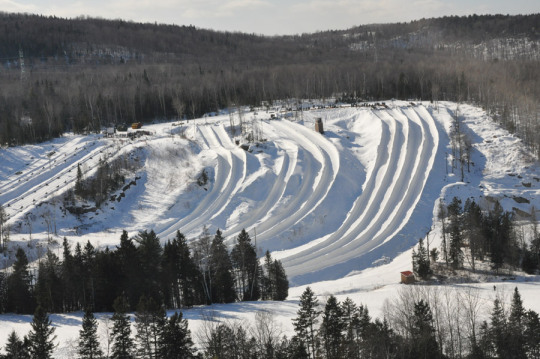
In my opinion, tourism is the main industry that is keeping the town alive and thriving. Having transitioned from an agriculture-focused community, in the modern day, the main crop for Saint-Jean-de-Matha would be tourists. While the town is gaining popularity as a tourist destination, it is not completely rid of problems that most rural places are facing today. The ageing population is one of the major problems that affect Saint-Jean-de-Matha.
The shortage of labour coupled with a decreasing working population creates fear that some businesses will cease to operate daily. In this city located one hundred kilometres from Montreal, the population is clearly ageing justifies the current lack of working adults.
From 2011, the number of people aged over 65 has increased by 20%, while the number of young people aged 15 to 24 has fallen by 16%.
According to the Montreal Economic Institute, the number of Quebecers under 45 years of age fell sharply between 1981 and 2010. Almost all sectors are affected in Saint-Jean-de-Matha, which has about fifty businesses and businesses, for a population of more than 4000 inhabitants.
When dealing with the age population, my personal view on how to mitigate this problem would be to (1) introduce policies that are welcoming of immigrants and (2) rehiring the aged population. The first policy looks at bringing more people into the community with the use of monetary incentives and attractive social benefits. If the town can position itself as being a more cost-effective place for the younger generation to settle down and live in, it can effectively increase the working population in the area. Another possible solution would be to allow the seniors to be reintroduced into the workforce, the town would have fulfilled the shortage of labour due to the rehiring of people aged over 65.
2 notes
·
View notes
Text
Hi there :) Its a statue btw, nothing creepy.

6 notes
·
View notes
Text
Short Movie Review with a hint of Rural Visualisation in the Contemporary Society
Rural Canada is often associated with natural landscapes such as mountains, coastlines and the picturesque countryside. Films, in this case, have done so with the portrayal of rural Canada on the big screen from as early as 1985. For instance, film One Week (2008) by Michael McGowan encompasses various backdrops featuring rural Canada. After looking at online reviews for this movie, I decided to take the leap of faith and procrastinate my Friday afternoon (rip assignments) to watch it. Upon reaching the end credits, I am happy to report that One Week indeed incorporates some excellent cinematography techniques to support the plot. From Carman, Manitoba to Minden, Ontario, the film showcased many scenic spots which may be familiar to many Canadians. Personally, I feel that the film almost seems to provide some form of refuge from my usual azoic habitat in the city. Without myself realizing it, I feel the urge to travel to these spots to see them in real life.
Link for the movie for those interested or scroll down to view ↓
Although it is not wrong to view rural Canada as a place with breathtaking natural wonders, most urban dwellers in Canada would often only associate rural Canada with a singular function.
However, rural Canada is so much more.
Rural Canada encompasses the cultural inheritance of traditions, experiences and wisdom. In a way, the increasingly homogenized urban global cities can no longer reproduce such unique landscapes (both physical and cultural). However, this very difference of culture that could lead to negative stereotypes and assumptions that urbanites may have against rural Canada.
One such negative perspective that the city folks that might have could be that they often dismiss rural residents as “ignorant”. However, assumptions can be easily made if there is a lack of information about each other. From the perspective of the rural residents, the lack of access to many media outlets for alternate opinions and views may justify the reason behind the perceived ignorance. This issue is also related to the power dynamics between the rural and the urban. Strategic decisions are often exclusively made in urban locations which cause the rural to be less developed hence the lack of access to the relevant services that they need. The aforementioned example only covered an edge of what is a deeply rooted problem. There are many other contentious topics such as the difference in terms of ethnicity, religions and cultures. Therefore, we should not make unfair assumptions of the rural without examining the socioeconomic forces that shape our local realities, politics, lifestyle and identities.
Although the film One Week as mentioned before did not paint the rural in a negative light, we can still see the importance of how art forms can alter the way people perceive things. Thereafter, the assumptions formed can influence decisions which are often city-centric. The decisions made would severely disadvantage the rural if negative stereotypes persist. The assumption that the city is more significant than the rural is especially detrimental because it creates a domino effect which further tips the power balance between the rural and the urban. For instance, would be the justification for not requiring rural election ridings to have populations as large as city seats. This is due to the population census not providing a complete picture for analysis. The fluxes of people are not effectively captured in these censuses for administrators to realize the population significance of the rural. This drastically affects the power balance between the rural and the urban.
youtube
5 notes
·
View notes
Text
Hi Kaleigh,
Sorry for the late reply!
Thank you for reading and replying to my post. When referring to alleviating poverty, I interpret Bekker’s quote as the rural being alleviated from poverty with the support from the urban. I feel that development should be more fitting to describe this interaction between the rural and urban and this is especially so when we are talking in the context of a developed country. To answer your question, I think a strong indication of development in the rural areas is the changing economic landscapes in these places. One salient example of such change is the commodification of rural landscapes. As mentioned in the paper by Mitchell (2013), which termed this restructuring as the creative enhancement. I think employment opportunities are covered under this overarching definition of this change that we are seeing in rural places today. As written in the paper, Mitchell proposed that rural areas have seen the addition of functions on top of their economic activities. I can relate to the observations that rural spaces are changing from task-scape into a leisure-scape and heritage-scape. As someone who has been living in a fast-paced lifestyle in an urban environment, I would definitely want to experience what is it like to be living in the countryside. Therefore, the rural idyll is a strong evocative thought for me. To cater to this demand, the many places in rural is shifting focus from primary production to the tourism industry. The introduction of these new functions provides new channels of income for rural places. I guess this metamorphosis of the rural can be advantages for the rural to be able to further develop? Furthermore, creative enhancements allow the physical rejuvenation of the place as well. Although technically speaking, it still entails some form of employment opportunities, but it encompasses other aspects as well. We can also consider improvements in the view of social-culture perspectives when the rural landscape changes.
Beacher
One without the other? A closer look at Rural-Urban Interdependency
Question: Does urban Canada “need” rural Canada today or are we able to function well without strong linkages?
In my opinion, Yes. Although I have not much context nor background information of Canada’s Rural-Urban relationship, I feel that there is an intrinsic connection between the two regions which ensures their mutual survival. Firstly, I want to start off with a personal experience which highlights the significance of the rural. Next, I will further postulate that rural-urban linkage is a necessity for the development for both areas with the aid from the concept of Urban-rural interdependence. Lastly, I will present two arguments (one for rural-to-urban dependence and another for urban-to-rural dependence) which presents this strong linkage between the two regions within the Canadian context.
Keep reading
3 notes
·
View notes
Text
One without the other? A Closer look at Rural-Urban Interdependency
Question: Does urban Canada “need” rural Canada today or are we able to function well without strong linkages?
In my opinion, Yes. Although I have not much context nor background information of Canada’s Rural-Urban relationship, I feel that there is an intrinsic connection between the two regions which ensures their mutual survival. Firstly, I want to start off with a personal experience which highlights the significance of the rural. Next, I will further postulate that rural-urban linkage is a necessity for the development for both areas with the aid from the concept of Urban-rural interdependence. Lastly, I will present two arguments (one for rural-to-urban dependence and another for urban-to-rural dependence) which presents this strong linkage between the two regions within the Canadian context.
Coming from Singapore, a developed nation-state with 100% of the metropolitan population, her economy thrives entirely on service and tertiary sector. Due to the geographical area and location, Singapore faces the absence of natural resources, extremely limited area for land use heavy economic activities such as farming (0% in agriculture). What does this mean? Singapore has almost no spaces that are considered to be rural. Therefore, Singapore is highly reliant on her imports of foodstuffs and consumer goods.
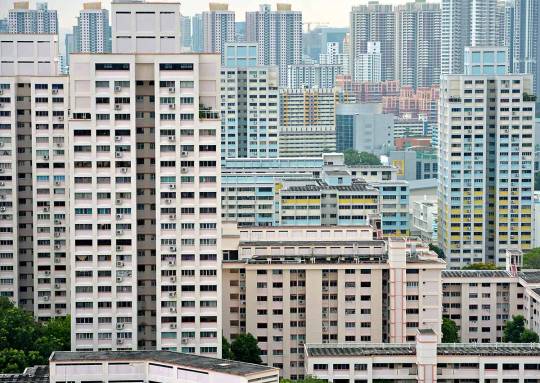
Public housing in Singapore
I vividly recall the spread of highly pathogenic H5N1 influenza (bird flu) in Asia during in 2005 which highlights this dependency on foreign imports. Singapore faced widespread food shortages (especially for avian products) during this period. Luckily for us, as the virus begin to lose its foothold, imports resume which solved the food shortage crisis. Therefore, I feel that urban regions’ development and lifestyle can be sustained without a stable supply of necessities. Where does this come from? You guessed it, the rural regions.

Photo source
Now I would like to introduce the concept of Rural-Urban Interdependence.
“Urban-rural interdependence includes spatial links to the movement of people, goods, money, and information between urban and rural areas including roads and railways, and sectorial links (interdependence between agriculture, industry and services). Rural-urban interdependence is important for poverty alleviation, sustainable rural development and urbanization. Strong linkages can improve the living conditions and employment opportunities of both rural and urban populations. Domestic trade and the adequacy and efficiency of infrastructure are the backbone of mutually beneficial rural-urban relationships and of the success of the relationship between urban and rural areas (Bekker, 2000).”
In a way, I feel that this concept draws heavily from the Core-Periphery Model (1963) by John Friedmann. While one of the main purposes of the model is to explain the spatial distribution of processes highlighting uneven development, the processes within the model can be put into context to explain the significance of rural-urban linkage. Processes within the rural-urban linkage are bilateral which explains the interference.

Core-Periphery Model
Rural Canada is important to urban Canada because of the continued supply of resources from the rural to the urban. Resources fulfil the urban consumption needs which facilitate the continued urban growth. Canada is one of the biggest exporters of agriculture product. Having a strong agriculture sector ensures the food security of urban Canada as well as meeting the global demands for agriculture goods. With the help of the extensive transportation networks, the movement of people and goods is hastened which further strengthen the linkage between rural and urban areas.
In turn, the urban regions benefit the rural regions by improving the aforementioned physical infrastructure and providing various benefits. For example, the Rural Economic Development Fund (RED) finances regional economic development activities in rural southern Ontario communities. The program currently emphases on providing the rural with additional resources to implement projects that increase regional economic opportunities. With the development of urban areas from the support of the rural, the rural regions receive a reciprocated benefit.
Therefore, I feel that it is naïve to assume that urban and rural are mutually exclusive and independent from one another. I argue that these two regions are in fact completely intertwined. However, I urge everyone to not view these two regions as separate spaces. The old orthodoxy of a dichotomous approach to urban development (vice versa) as distinct from rural development no longer accords with reality, considering the complementary functions and flows of people, capital, goods and services between the two areas. Rural and urban areas are economically, socially and environmentally interdependent.
Of course, much of my discussion post has been one-sided taking the position that the rural-urban linkage is a necessary condition for the development of both regions. However, I welcome a different perspective on why urban Canada just might survive without rural Canada in the comments below. Cheers.
3 notes
·
View notes
